
Nortonville is a home rule-class city in Hopkins County, Kentucky, in the United States. The population was 1,204 as of the 2010 census.
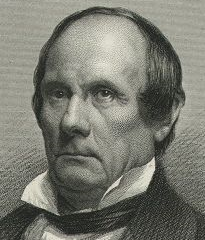
James Guthrie was an American lawyer, plantation owner, railroad president and Democratic Party politician in Kentucky. He served as the 21st United States Secretary of the Treasury under Presidents Franklin Pierce and James Buchanan, and then became president of the Louisville and Nashville Railroad. After serving, part-time, in both houses of the Kentucky legislature as well as Louisville's City Council before the American Civil War, Guthrie became one of Kentucky's United States Senators in 1865. Guthrie strongly opposed proposals for Kentucky to secede from the United States and attended the Peace Conference of 1861. Although he sided with the Union during the Civil War, he declined President Abraham Lincoln's offer to become the Secretary of War. As one of Kentucky's Senators after the war, Guthrie supported President Andrew Johnson and opposed Congressional Reconstruction.
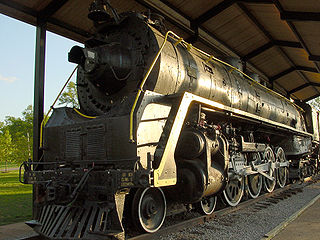
The Nashville, Chattanooga and St. Louis Railway was a railway company that operated in the U.S. states of Kentucky, Tennessee, Alabama, and Georgia. It began as the Nashville and Chattanooga Railroad, chartered in Nashville on December 11, 1845, built to 5 ft gauge and was the first railway to operate in the state of Tennessee. By the turn of the twentieth century, the NC&StL grew into one of the most important railway systems in the southern United States.

The Louisville and Nashville Railroad, commonly called the L&N, was a Class I railroad that operated freight and passenger services in the southeast United States.
Louisville & Nashville Railroad Company v. Mottley, 211 U.S. 149 (1908), was a United States Supreme Court decision that held that under the existing statutory scheme, federal question jurisdiction could not be predicated on a plaintiff's anticipation that the defendant would raise a federal statute as a defense. Instead, such jurisdiction can only arise from a complaint by the plaintiff that the defendant has directly violated some provision of the Constitution, laws, or treaties of the United States. This reading of the federal question jurisdiction statute is now known as the well-pleaded complaint rule.
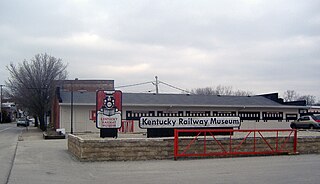
The Kentucky Railway Museum, now located in New Haven, Kentucky, United States, is a non-profit railroad museum dedicated to educating the public regarding the history and heritage of Kentucky's railroads and the people who built them. Originally created in 1954 in Louisville, Kentucky, the museum is at its third location, in extreme southern Nelson County. It is one of the oldest railroad stations in the United States.
The Memphis, Clarksville and Louisville Railroad (MC&L) was a railway in the southern United States. It was chartered in Tennessee in 1852, and opened in 1859. The MC&L entered receivership after the American Civil War, and financial troubles led to an 11-day strike in 1868 that ended when Louisville and Nashville Railroad (L&N) leased the line. L&N finally purchased the MC&L in 1871 and operated it as its Memphis Branch. L&N was merged into CSX, and CSX sold the former MC&L line to R.J. Corman Railroad Group in 1987, becoming that company's Memphis Line.

Limerick is a neighborhood one mile south of downtown Louisville, Kentucky, USA.

John LaRue Helm was the 18th and 24th governor of the U.S. Commonwealth of Kentucky, although his service in that office totaled less than fourteen months. He also represented Hardin County in both houses of the Kentucky General Assembly and was chosen to be the Speaker of the Kentucky House of Representatives four times. In 1838, his sole bid for federal office ended in defeat when his opponent, Willis Green, was elected to the U.S. House of Representatives.
As with most American cities, transportation in Louisville, Kentucky is based primarily on automobiles. However, the city traces its foundation to the era where the river was the primary means of transportation, and railroads have been an important part of local industry for over a century. In more recent times Louisville has become a national hub for air cargo, creating over 20,000 local jobs. The city has also launched several initiatives to promote both utilitarian and recreational bicycling. In 2016 Walk Score ranked Louisville 43rd "most walkable" of 141 U.S. cities with a population greater than 200,000. In 2015, 11.7 percent of Louisville households were without a car, which decreased to 10.9 percent in 2016. The national average was 8.7 percent in 2016. Louisville averaged 1.61 cars per household in 2016, compared to a national average of 1.8 per household.
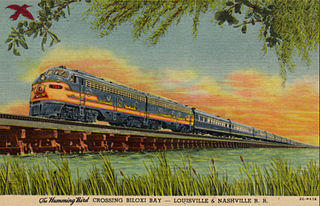
The Humming Bird was a named train of the Louisville and Nashville Railroad (L&N). The train, inaugurated in 1946, originally ran from Cincinnati, Ohio, to New Orleans, Louisiana, via Louisville, Nashville, Birmingham, Montgomery and Mobile and later via a connection at Bowling Green, Kentucky, to Memphis, Tennessee. A connection to Chicago was provided by the Chicago and Eastern Illinois Railroad.

The Historic Railpark and Train Museum, formerly the Louisville and Nashville Railroad Station in Bowling Green, Kentucky, is located in the historic railroad station. The building was placed on the National Register of Historic Places on December 18, 1979. Opened in 1925, the standing depot is the third Louisville & Nashville Railroad depot that served Bowling Green.
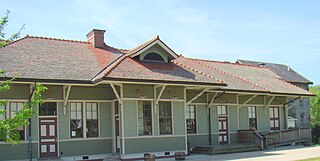
Stanford L&N Railroad Depot, also known as Baughman's Mill and Stanford Railroad Depot, is a historic train depot located in Stanford, Kentucky. It was built in 1911 and was used by the Louisville and Nashville Railroad.

The L & N Railroad Depot in the Hopkinsville Commercial Historic District of Hopkinsville, Kentucky is a historic railroad station on the National Register of Historic Places. It was built by the Louisville & Nashville Railroad in 1892.

The Louisville and Nashville Railroad Office Building, at 908 W. Broadway in downtown Louisville, Kentucky, is a historic skyscraper building, built in 1907, which is listed on the National Register of Historic Places. It was once the headquarters of the Louisville and Nashville Railroad, a prominent railroad company from the mid-19th century to the 1970s.

Gravel Switch is an unincorporated community within Marion County, Kentucky, United States. It is located along Kentucky Route 243, just south of its intersection with U.S. Route 68, southwest of Perryville and northeast of Bradfordsville.
Kettle Island is an unincorporated community and coal town in Bell County, Kentucky, United States. Kettle Island is located on Kentucky Route 1630 near Kentucky Route 221, 5.35 miles (8.61 km) east-northeast of Pineville. Kettle Island has a post office with ZIP code 40958, which opened on March 15, 1912. The community also had a station on the Louisville and Nashville Railroad.
Fies is an unincorporated community located in Hopkins County, Kentucky, United States. The town of Fies took its name from the mine founded there in 1950, where most residents worked.
The Louisville, Harrods Creek and Westport Railway was a 19th-century railway company in the U.S. state of Kentucky. Its first president was James Callahan. It was organized by Louisvillian businessmen in 1870, began construction and operation of the 3 ft narrow gauge railway in 1872, and failed in 1879 owing to the era's Long Depression. The line then gave up hope of connecting to Westport or beyond and reincorporated as the more modest Louisville, Harrods Creek and Westport Railroad, which simply continued service along the existing track.
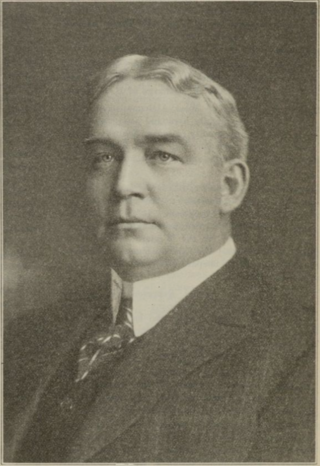
Whiteford Russell Cole was an American businessman. He was the president of the Louisville and Nashville Railroad from 1926 to 1934, and a director of many companies. During the railroad strike actions of 1921–1922, he threatened his workers with dismissal and loss of pensions. His mansion in Louisville, Kentucky is the official residence of the president of the University of Louisville.
















